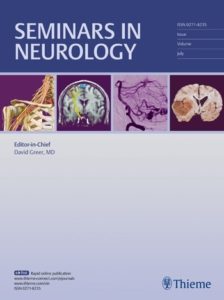Concussion may lead to subtle changes in brain function, and tests involving the visual system probe higher cortical functioning and increase our sensitivity in detecting these changes. Concussions are acutely and sometimes more persistently associated with abnormalities in balance, cognition, and vision. The visual system involves roughly half of the brain’s circuits, including many regions susceptible to head impacts. After a concussion, the neuro-ophthalmologic exam commonly detects abnormalities in convergence, accommodation, the vestibulo-ocular reflex, ocular muscle balance, saccades, and pursuit. The King-Devick (K-D) test is a visual performance measure that may increase the sensitivity of detecting concussions on the sideline when used in combination with tests of cognition and balance that are part of the Sports Concussion Assessment Tool (3rd ed.; SCAT3). Portable eye movement trackers and pupillometry may in the future improve our neuro-ophthalmic assessment after concussions. Combining visual tasks with neuroimaging and neurophysiology has allowed subtle changes to be detected, may refine our ability to make appropriate return-to-play decisions, and could potentially determine susceptibility to long-term sequelae of concussion.
Summary Points:
- Given that about half the brain’s circuits are involved in vision, it is not surprising that concussions often involve injury to visual pathways. Additionally, post-concussive visual symptoms are common.
- The K-D Test is a measure of eye movement performance that provides an objective outcome.
- Rapid number naming requires saccades, attention, and language, as well as other areas of the brain required for reading. Therefore the K-D Test evaluates brainstem, cerebellum, and cerebral cortex functioning.
- The K-D Test has been studied in youth, collegiate, and professional sports and tested among concussed and non-concussed athletes. It has been found that there is a 5- to 7-second increase in post-injury K-D Test scores compared with the individual’s baseline.
- The most commonly used sideline tests such as the SAC and BESS do not assess eye movements. The K-D Test provides a visual assessment post-injury and, when used in combination with the SAC and BESS, increases the sensitivity for identifying potential concussions.
- The K-D Test has the greatest capacity to distinguish those who sustained concussion versus controls when compared with a timed tandem-gait test and the SAC.
Tests involving the visual system can probe higher cognitive functioning and can increase our ability to detect subtle changes associated with brain injury.

